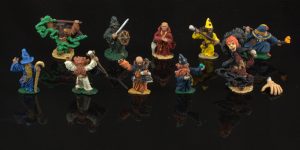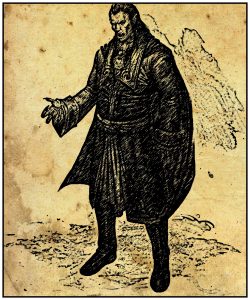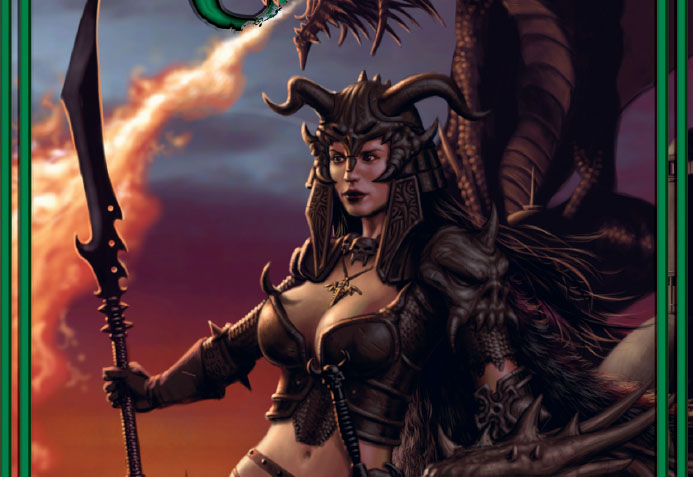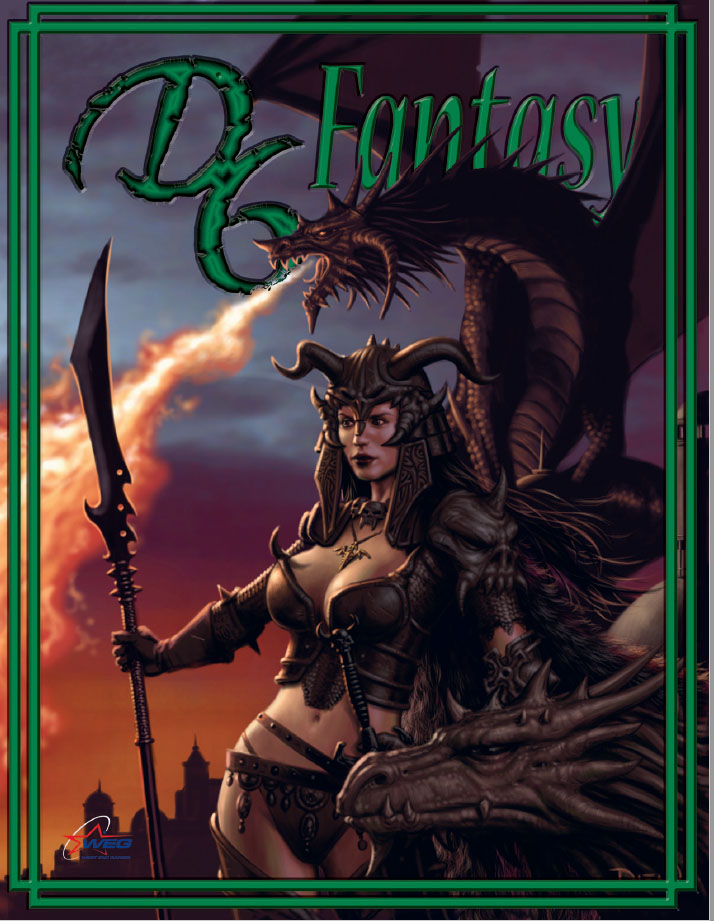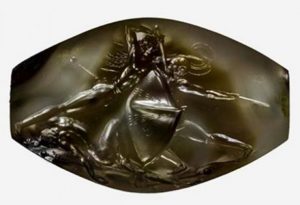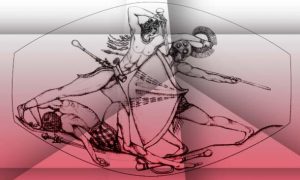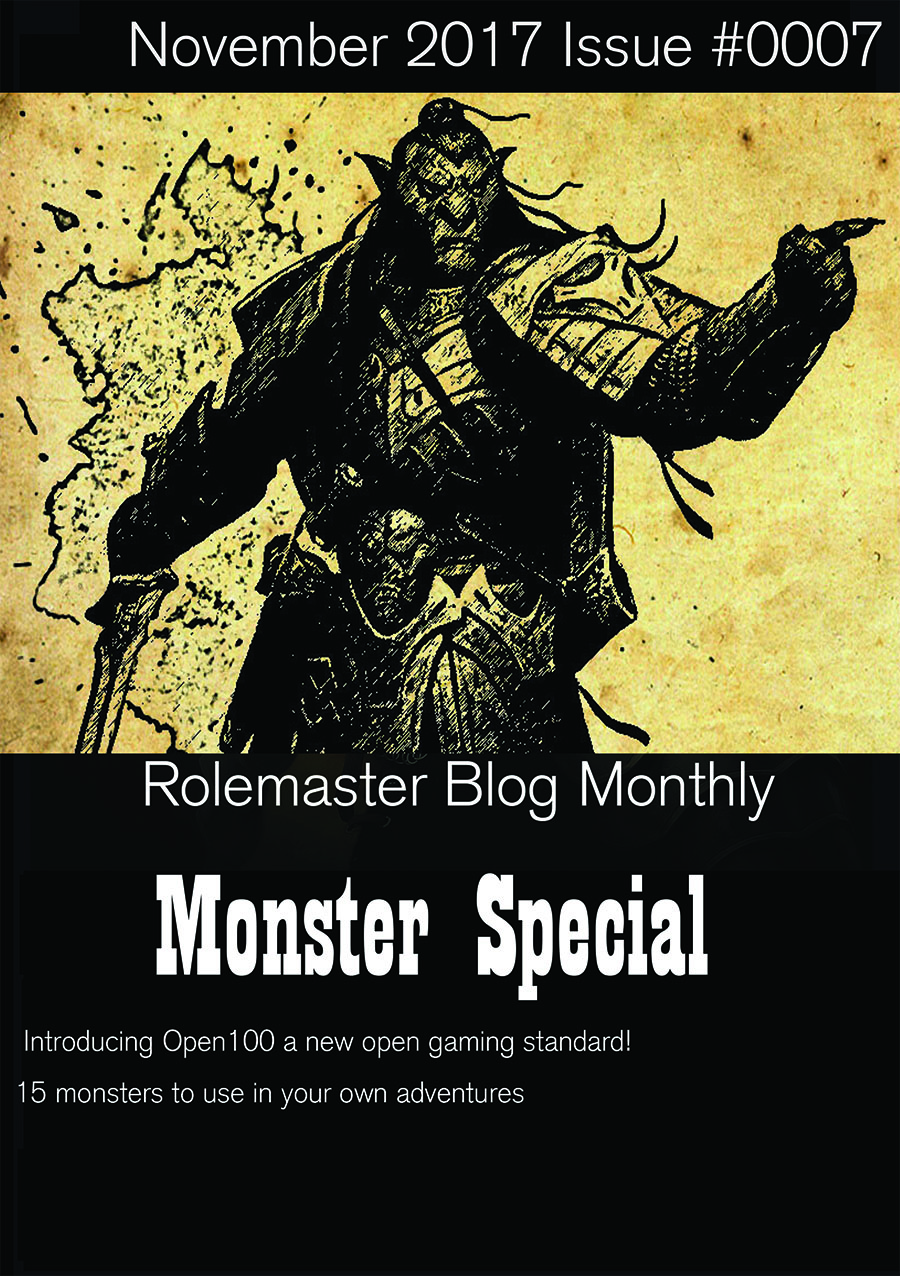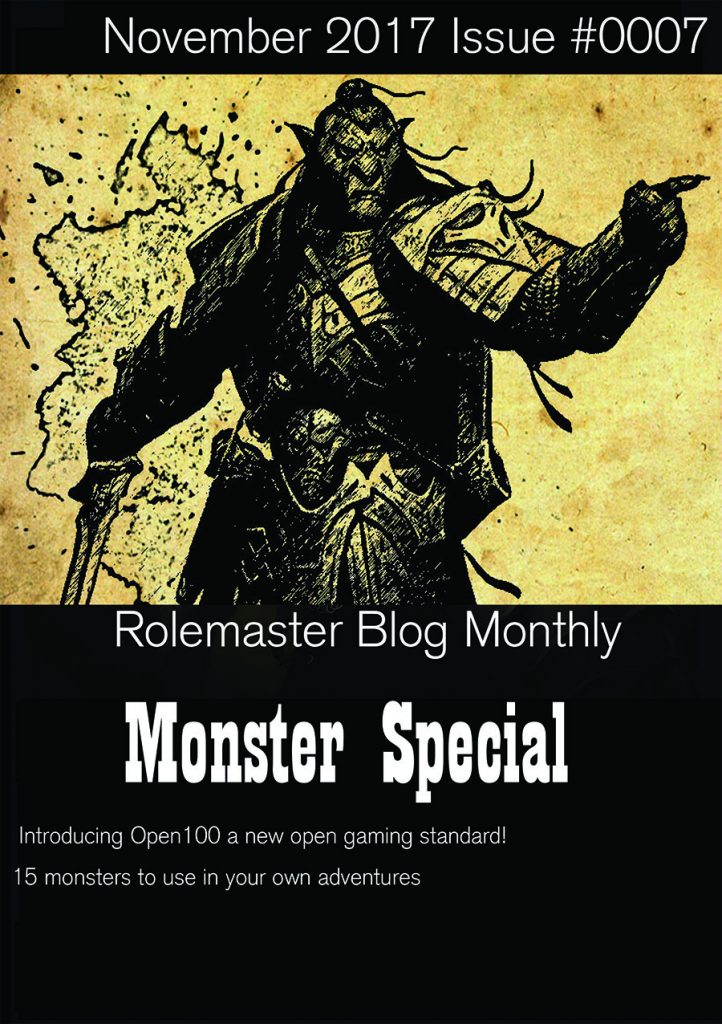I hope everyone had a great Thanksgiving! (here in the USA). We are winding down another year at Rolemasterblog so maybe Peter will do a “Year in Review”? We have lot’s of ongoing projects and some cool stuff planned for 2018. Personally, I have so many irons in the fire it’s feeling a bit overwhelming! I thought I would do a quick overview from my persective:
- Back in April we started a challenge to write 50 Adventures and publish them over 50 weeks. Now we are heading into our 5th week! These are short adventure hooks, place, ideas or small layouts you can drop into a campaign etc. You can find the latest HERE with links to the others already published.
- Legends of Shadow World (LoSW). Along with the 50 in 50, I decided I wanted to design a high level adventure for Rolemaster; both as a challenge and to really test the system and rules. Ultimately, I ended up with a 5 part tourney series using 40th to 50th lvl PC’s. The first Chapter can be found HERE, and the second chapter The Temples of Muartaar will be available shortly.
- BASiL. My rewrite of Spell Law has turned into a beast–I was fine tuning spell lists and ended up adding over 3 dozen more lists in the last few months. I think I am almost at 250 total spell lists with 25 or 30 that are Shadow World specific. The individual spell count is just over 6500 spells with a lot less duplication that the original Spell Law. My hope is to publish these under a generic d100 format: either by individual lists, groups or realm.
- The Book of the Pales. I have this 85% done, but started working on a few other things. I’m hoping some downtime over the holidays will let me finish this sooner. I’m enjoying this work–it greatly expands upon the Pales in Shadow World, establishes some rules for adventuring, adds new creatures and explains some underpinnings of the world to support assumptions in Summoning/Gate spells. Interestingly, this has led to a broadening of the work into the more alien, non-physical realms like the Outer Void.
- SWARM. I’m debating whether I should bother uploading my SWARM ruleset–either as alternative rules for RM or as a generic d100 book. Rules are so arbitrary and every GM has their favorites, I’m not sure this would appealing to anyone and adventure content and new spell lists might be more useful than my rules.
- LEGENDARY SERIES: Monster Squad! So my new project after LoSW is a series of adventures using a pre-generated group of…MONSTERS!!!! (btw: isn’t a monster just a point of view?) . A recent post on the forums HERE along with several posts Peter and I did has had me thinking about a adventure group made up of traditional “monsters”. I’ve always like to subvert tropes in my games, and the premise of flipping the players perspectives to that of traditional foes is very appealing. This follows with the recent tradition of a band of anti-heroes like Suicide Squad or League of Extraordinary Gentlemen.
The original Monster Squad would make for a great classic adventure–I’m going to write that and post it next October for Halloween. This would include:
- Dracula (Vampire)
- Mummy (Egyptian Pharaoh)
- Creature from the Black Lagoon (Lizard or Merman)
- Frankenstein (Flesh Golem)
- Wolfman (Were Creature)
Unlike the movie, this adventure would have the creatures as pre-gen PC’s. I’ve got a great outline for an adventure that would be around 15th to 20th lvl and 3 ideas for plots and foes. What possible enemy or situation would force this group to band together…and save the WORLD?!!
A couple of ideas I’m tossing around for a Monster Squad set in Shadow World:
- Demons. Erickson uses Demons as NPC’s in his Malazan series and in fact, has some chapters written from a Demon’s perspective. (he was magically wrenched from his farm and found himself in the middle of a battle)!!! I already discussed Neng, but how cool would it be to have a Pale III or IV as a PC?
- Undead. Playing a vampire is obvious..and cool..but how about a Wraith or Lich?
- Fey. I’ll write the adventures for Shadow World, so throwing in a Dryad or other Fey might be interesting.
- Krylites. Insect humanoids! Electricity guns! yep that’s cool!!
- Golem. I just finished the book Heart of Stone and used an Eog Golem in my LoSW adventures. I like the idea of a sentient construct as a PC. Flesh Golems are neat but how about one of stone, steel or enchanted alloy?
My last idea for the “LEGENDARY SERIES” is an adventure using holiday/fantasy creatures. This might be a great intro adventure for kids or just a fun version for Rolemaster Lite/d100. Something like this:
- Santa Claus. Yes, Santa has a spell list!
- Heat Miser. My childhood favorite.
- Easter Bunny.
- Jack Frost.
The goal is to create on-off adventures using famous characters to add some fun and accessibility to new players but using the gritty RM ruleset. Who wouldn’t want to “E” 66 Santa? Any suggestions for a cool Monster or character PC?




